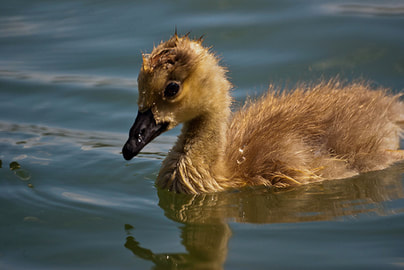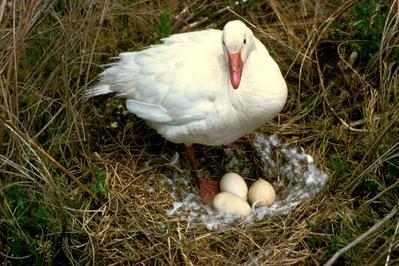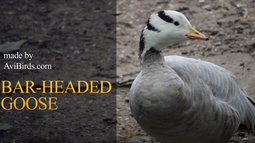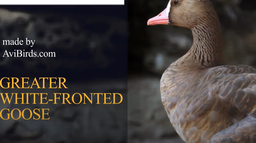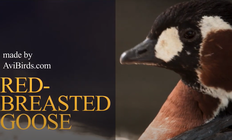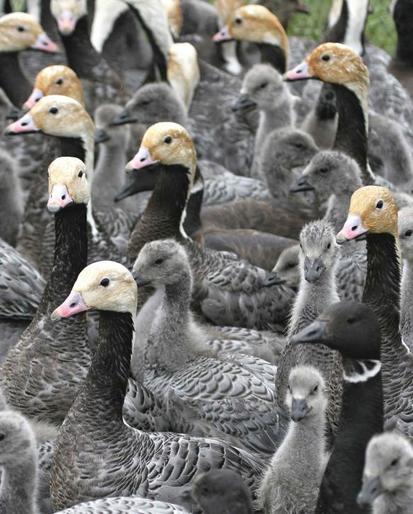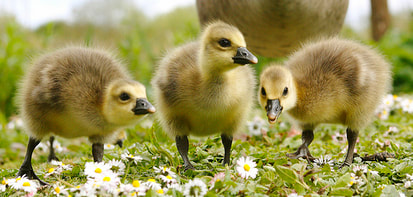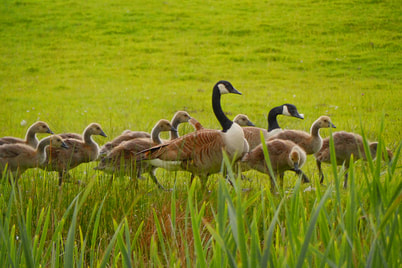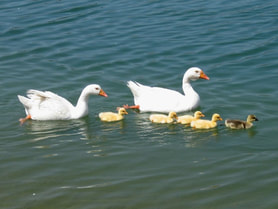GEESE
Bird - Vertebrate - Omnivore
Bird - Vertebrate - Omnivore
|
Male: Gander
|
Female: Goose
|
Young: Gosling
|
GEESE
There are about 52 breed of geese in the world.
- Are monogamous, unless their mate dies.
- Have a long lifespan - up to 24 years - but most die in their first year because of predators.
- Can travel very long distances.
- Always fly in a 'V' formation. This is to conserve energy. Each bird flies slightly higher than the one in front, in order to reduce wind resistance. The goose in front creates an uplift for the goose behind, then when one tires, another one takes over the lead. (See 'Lessons we could learn from geese' below).
- Flying in formation give them 71% greater flying range.
- Flying in 'V' formation also makes it easy to keep track of each other and may assist with communication within the group.
- Honk whilst flying to encourage those in front to keep up their speed.
- Have a strong desire to return to their birth place.
- Eat grain, grass, leaves, herbs, aquatic plants, minnows snails and frogs.
- Forage for food most of the day, mainly on land.
- Moult annually - losing flight and tail feathers - making it impossible for them to fly and the new feathers grow (generally about 6 weeks).
- Like to be in groups and help their sick and ailing, staying with the goose until he is able to fly again or dies.
- Goslings fly at about 2-3 months old.
- Main predators are foxes, owls and raccoons.
- Use about 10 different sounds to communicate.
- One egg equates to 3 chicken eggs.
- Make excellent watchdogs.
- Are known to 'adopt' goslings from others, known as 'brood rearing'.
LESSONS WE COULD LEARN FROM GEESE ... Author unknown
Fact 1: As each goose flaps its wings, it creases an 'uplift' for the birds that follow. By flying in a 'V' formation, the whole flock adds 71% of greater flying range than if each bird flew alone.
Lesson: People who share a common direction and sense of community, can get where they are going quicker and easier because they are travelling on the thrust of one another.
Fact 2: When a goose falls out of formation, it suddenly feels the drag and resistance of flying alone. It quickly moves back into formation to take advantage of the lifting power of the bird immediately in front of it.
Lesson: If we have as much sense as a goose, we stay in formation with those headed where we want to go. We are willing to accept their help and give our help to others.
Fact 3: When the lead goose tires, it rotates back into the formation and another goose flies to the point position.
Lesson: It pays to take turns doing the hard tasks and sharing leadership. As with geese, people are interdependent upon each other's skills, capabilities and unique arrangements of gifts, talents and resources.
Fact 4: The geese flying behind, honk to encourage those up front to keep up their speed.
Lesson: We need to make sure talking to each other is encouraging. In groups where there is encouragements, the production is much greater.
Fact 5: When a goose gets sick, wounded or shot down, two geese drop out of formation and follow it down to help and protect it. They stay with it until it is able to fly again, or it dies. Then, they launch out with another formation or catch back up with its flock.
Lesson: If we have as much sense as geese, we will stand by each other in difficult times, as well as when we are strong.
Fact 1: As each goose flaps its wings, it creases an 'uplift' for the birds that follow. By flying in a 'V' formation, the whole flock adds 71% of greater flying range than if each bird flew alone.
Lesson: People who share a common direction and sense of community, can get where they are going quicker and easier because they are travelling on the thrust of one another.
Fact 2: When a goose falls out of formation, it suddenly feels the drag and resistance of flying alone. It quickly moves back into formation to take advantage of the lifting power of the bird immediately in front of it.
Lesson: If we have as much sense as a goose, we stay in formation with those headed where we want to go. We are willing to accept their help and give our help to others.
Fact 3: When the lead goose tires, it rotates back into the formation and another goose flies to the point position.
Lesson: It pays to take turns doing the hard tasks and sharing leadership. As with geese, people are interdependent upon each other's skills, capabilities and unique arrangements of gifts, talents and resources.
Fact 4: The geese flying behind, honk to encourage those up front to keep up their speed.
Lesson: We need to make sure talking to each other is encouraging. In groups where there is encouragements, the production is much greater.
Fact 5: When a goose gets sick, wounded or shot down, two geese drop out of formation and follow it down to help and protect it. They stay with it until it is able to fly again, or it dies. Then, they launch out with another formation or catch back up with its flock.
Lesson: If we have as much sense as geese, we will stand by each other in difficult times, as well as when we are strong.
AviBIRDS.COM YouTube films of Birds
Click on the image to view the film
Click on the image to view the film
